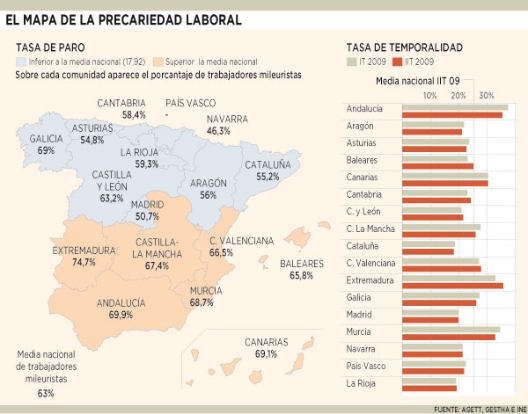The tendency of the profit rate to fall, as Marx explained, is the weak point of capitalism, to the extent that profit is the aim, the motive and the finality of capital. Its effective fall, conditioned by the rise in the organic composition of capital, is at the end of the day the cause of the paralysis of the process of accumulation of capital, sharpening the basic contradiction of capitalism between the social character of the process of production and the private, capitalist form of appropriation of its results.
The crisis is the consequence of the huge increase in productivity of the labour force, of human labour exploited in factories and fields, which in turn produces an increase in capital, in surplus-value and in commodities, capital which cannot be re-accumulated at a suitable rate of profit.
The problem is not the abundance of unsold commodities, but the abundance of commodities unsold at a given rate of profit. The cause of the crisis is in no way a crisis of under-consumption. The working class exists for capitalism as producer of value, not as consumer.
Pursuing higher profits or the maintenance of the average profit rate, on the other hand a tendency for the profit rate to fall occurs because the real limit of capitalist production is capital itself. To overcome these inherent limits to the capitalist mode of production, the following lines of action have been adopted in the last decades.
- Political intervention to organise the valorization cycle at world level:
A) Producing and realising surplus value on a world scale through a boundless increase in productivity. Extending capitalist production relations to the entire world.
B) Territories and markets are annexed, the price of labour force, agricultural products and raw materials becomes cheaper, etc.
- The increase in productivity has been accompanied by a lowering of wages – devaluing the price of labour force as a commodity. To compensate for this there has been an exaggerated increase in fictitious capital and in credit. Financial and speculative capital have soared to face up to the stagnation of the profit rate while parasitism increases as a result of capitalist development in its imperialist phase.
The crises of overproduction of capital as of commodities, exclusive to capitalism, make the irrationality of the system violently explicit. The present crisis has struck capital with a violence difficult to measure and to dominate, revealing the historic limits and the caducity of capitalism.
In this sense, in the International Meeting of Communist and Workers’ Parties held in Athens from 18 to 20 November 2005, on the subject “Current tendencies of capitalism and their economic, social and political impact. The Communist alternative”, our party gave the following warning in its contribution:
“The risk of a world economic collapse is increasing each day. The global economy demonstrates that, in spite of the high concentration of capital, profits represent an ever decreasing percentage of the millions bandied by the big transnational companies. The operations of financial engineering, with the aim of “doctoring” the accounts of the results of the big firms, are everyday practice to try to cover up the situation, but they can in no case slow it down. Capital is encountering ever greater difficulties in completing its cycle of increased reproduction. Extremely high levels of speculation and having recourse to financialization not only cannot solve the problem, but complicate even more the panorama.”
Other factors linked to the crisis of overproduction interact dialectically and come in conflict in their turn with the limits of capitalism and the production of surplus-value and capital. Among these:
- The oil production peak and its consequences for models of production, transport, urbanism, life etc. The International Energy Agency declares that the developing countries could increase their demand by 47% to 121 million barrels daily in 2030 and that the oil companies and the producing countries will have to spend around
100 000 million dollars annually (76.500 million euros) to develop new sources in order to keep up this pace.
- Climate change, perhaps already out of control for the system of production of surplus-value and which affects ecosystems and peoples’ conditions of life and work of negatively. The earth has lost in just over a quarter of a century practically a third of its biological wealth and its resources and at the present pace humanity will need two planets by 2030 to maintain its lifestyle, as the World Wide Fund For Nature (WWF) has warned.
- The food catastrophe, which condemns millions of human beings to death by exhaustion due to lack of nourishment. According to the FAO, the number of undernourished people rose from 850 to 925 millions, as a result of the rise in the price of foodstuffs in the period 2.007 – 2008,. The price of foodstuffs increased by 12 % between 2005 and 2006, by 24% in 2007 and by nearly 50 % between January and July 2008.
The capitalist crisis will not be overcome by reformist means or Keynesian recipes. Only by means of increasing exploitation, plunder and drastic restriction of all democratic rights can the capitalist system overcome the crisis. Marx and Engels, in The Communist Manifesto asked themselves “How does the bourgeoisie get over these crises?” and they replied “On the one hand by enforced destruction of a mass of productive forces; on the other, by the conquest of new markets, and by the more thorough exploitation of the old ones. That is to say, by paving the way for more extensive and more destructive crises, and by diminishing the means whereby crises are prevented.”
Either the bourgeoisie will consolidate its exit from the crisis by toughening capitalist dictatorship and introducing growing levels of violence to guarantee the process of accumulation of capital, or the great majorities of working people will opt for a solution in terms of a popular counter-offensive which will benefit the social majority and not the plutocracy.
Modern society is built in tune with the contradiction labour/capital in the sense that all the contradictions existing in society come up against the increase in the value of capital. The food crisis, the energy crisis, the environmental crisis, the hydrologic crisis, gender discrimination through patriarchal hierarchy, the destruction of the land, urban speculation, racial and ethnic discrimination, famines and pandemics, etc. All the struggles generated in these fields must be directed against the power of monopolies, in the perspective of revolutionary overcoming of capitalism.
The consequences of the capitalist crisis are daily worsening for the working class and other popular sectors. The constant increase in unemployment, the redundancies planned by the employers to eliminate the sectors of the working class with most rights, the systematic theft of indemnities and outstanding payments, the non-payment of over-hours, the lowering of wages, etc. are all on the agenda.
In inter-annual terms, the Spanish economy has experienced a contraction of 4,2% of GDP in the last year, with a rate of -1,1% in the second semester of 2009, according to the data of the Ministry of Economy and Finance. All the productive sectors registered negative growth rates in comparison with the same period of the year before. The Aim of Stability fixed for the period of 2010 – 2012, foresees a negative growth of 3,6 % for 2009, coinciding with the figures of the Spanish government.
The Spanish working class is being harshly hit. Full-time employment has fallen by 7,1 % in one year. According to a recent document issued by the experts of the Ministry of Finance, 63 % of Spanish wage-earners receive a gross monthly income of less than 1 100 euros (16,7 million wage-earners). Between 1999 and 2006, net profits of Spanish firms increased by 73%, more than double the average of the EU-15 33,2 %) or of the euro zone (36,6 %), whereas in the same period labour costs in Spain increased by only 3,7%, five times less than in the EU-15 (18,2%). According to forecasts of the National Employment Institute, unemployment will be about 25 % at the end of 2009.
The economic data confirm that there is a direct relation between unemployment, temporary jobs and wage levels. Geographically, the data make it clear that communities with a rate of unemployment higher than the national average are also those where temporary contracts and low wage-earners (around 1.000 euros) are most prevalent.
Map of lack of job security
Unemployment rate
Below national average
Above national average
On each community is indicated the percentage of workers earning around 1000 euros
Percentage of temporary workers

